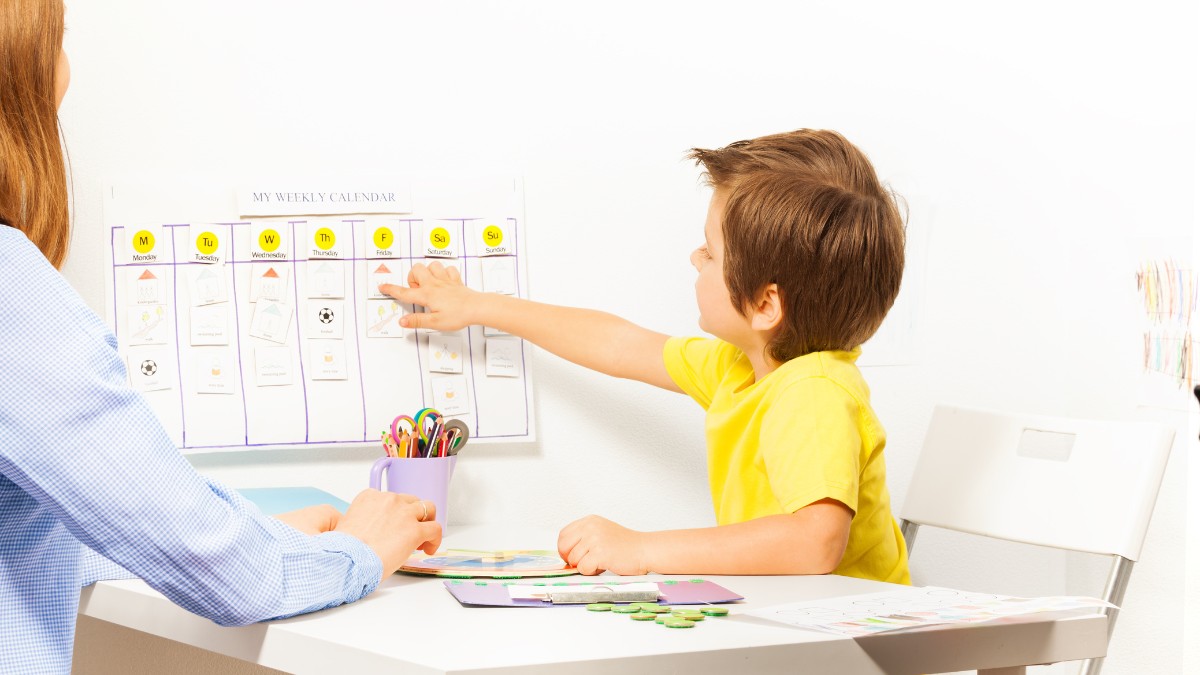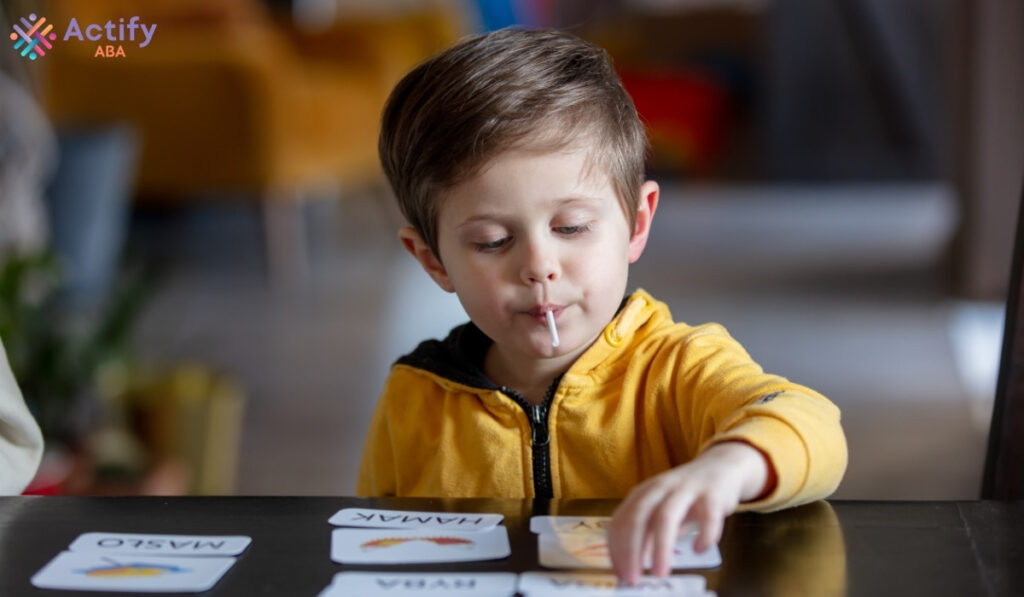
Key Points:
- ABA programs in Maryland often use evidence-based methods like DTT, NET, and prompting strategies.
- Each technique targets specific skills—from language development to behavior regulation.
- Understanding these techniques helps parents actively support their child’s progress.
When families first hear about Applied Behavior Analysis (ABA), it can feel like a flood of unfamiliar terms. But the techniques used in ABA aren’t just clinical jargon—they’re practical, structured tools that help kids learn life-changing skills.
In Maryland, ABA therapy providers like us at Actify ABA rely on a blend of time-tested approaches to meet each child’s unique needs. Whether services happen in homes or clinics, the core techniques often remain the same, though how they’re applied may differ. In this article, we’re breaking down the most commonly used ABA strategies in a way that’s digestible and directly helpful to parents and caregivers navigating therapy choices.
What Makes a Technique “ABA”?
Let’s start with the basics. ABA techniques are grounded in behavioral science and focus on teaching skills through clear instructions, consistent reinforcement, and data tracking. These methods are often broken into smaller, teachable steps so a child can build up toward bigger goals.
The approaches covered here are frequently used in ABA therapy in Maryland and can be tailored to address everything from communication deficits and social skills to emotional regulation and daily routines.

1. Discrete Trial Training (DTT)
One of the most foundational techniques in ABA, DTT is a structured way to teach new skills by breaking them into smaller steps.
How It Works:
Each “trial” includes three parts: the instruction (or demand), the child’s response, and the consequence (reinforcement or correction). This clear, repetitive structure helps children learn through practice and immediate feedback.
Why It’s Useful:
DTT is particularly helpful for teaching basic skills like identifying objects, responding to questions, or following one-step directions. It reduces confusion by eliminating distractions, especially early in therapy.
Real-World Example:
A therapist might say, “Touch your head,” and if the child does, they receive a reward (like a preferred toy or praise). If they don’t, the therapist models the behavior and tries again.
2. Natural Environment Teaching (NET)
While DTT takes place in a highly structured setting, NET brings learning into real-life moments.
How It Works:
Therapists use naturally occurring situations and the child’s interests to teach skills. This helps with generalization—making sure what’s learned in therapy sticks outside of it.
Why It’s Useful:
NET is excellent for social skills, language development, and play-based learning. It often feels more like play than therapy, which can be motivating for children.
Real-World Example:
During snack time, a therapist might prompt a child to request more juice by saying “juice” instead of just refilling the cup automatically.
3. Task Analysis
Many life skills are complex—think brushing teeth or getting dressed. Task analysis breaks those skills down into smaller, teachable components.
How It Works:
Each step of the larger task is taught individually. Depending on the child, therapists may use forward chaining (teaching the first step first), backward chaining (starting with the last step), or total task presentation (teaching all steps at once).
Why It’s Useful:
This technique builds independence in everyday routines and is especially useful for children who struggle with executive functioning or motor planning.
Real-World Example:
Brushing teeth may be broken down into: pick up toothbrush, turn on water, apply toothpaste, brush top teeth, brush bottom teeth, rinse, and so on.
4. Prompting and Prompt Fading
Prompting helps guide a child toward the correct response when learning a new skill. But the ultimate goal is for the child to perform the skill independently.
How It Works:
Prompts can be physical (hand-over-hand), verbal, gestural, or visual. Prompt fading means gradually reducing the prompt so the child learns to complete the task without help.
Why It’s Useful:
Prompting ensures a child doesn’t get stuck in frustration or failure while learning. Fading builds true independence over time.
Real-World Example:
To teach a child to wave goodbye, a therapist may initially model the wave and guide the child’s hand, then reduce to a gesture, and eventually just give a verbal cue like “Say bye!”

5. Reinforcement Strategies
Reinforcement is at the heart of ABA. It’s how we increase the likelihood that a desired behavior will happen again.
How It Works:
Positive reinforcement involves delivering a preferred item or praise immediately after the desired behavior. Over time, the child begins to make connections between actions and rewards.
Why It’s Useful:
It helps build motivation and encourages skill repetition. Importantly, reinforcement must be meaningful to the individual child—what works for one may not work for another.
Real-World Example:
If a child says, “I want ball,” and receives the ball right away, the connection is made: using words gets me what I want.
6. Shaping
Some behaviors don’t happen all at once. Shaping involves reinforcing closer and closer approximations of the desired behavior.
How It Works:
Rather than waiting for the full, correct behavior to emerge, we reward partial attempts that move in the right direction.
Why It’s Useful:
It helps build complex or difficult behaviors that may be too challenging to do all at once, such as speaking in full sentences or tolerating a haircut.
Real-World Example:
A child who screams when asked to wear shoes might first be reinforced for just touching the shoes, then for putting one on, and so on—until wearing both shoes becomes routine.
7. Functional Communication Training (FCT)
Challenging behaviors often stem from unmet communication needs. FCT replaces those behaviors with appropriate ways to express wants or needs.
How It Works:
Therapists assess the function of a behavior (why it’s happening), then teach an alternative form of communication that serves the same function—like asking for a break instead of throwing toys.
Why It’s Useful:
It not only reduces problem behaviors but empowers the child to advocate for themselves in healthier ways.
Real-World Example:
If a child hits when overwhelmed, FCT might teach them to say “I need a break” or hand over a “break” card instead.
8. Behavior Reduction Techniques
Alongside teaching new skills, ABA also focuses on decreasing behaviors that interfere with learning or safety.
How It Works:
A Behavior Intervention Plan (BIP) is developed based on data and observation. This plan outlines strategies for preventing, redirecting, and reducing problem behaviors—without relying on punishment.
Why It’s Useful:
It helps parents and therapists respond consistently, which is key to lasting behavior change. This includes identifying triggers, teaching replacement behaviors, and using proactive strategies.
Real-World Example:
For a child who has frequent meltdowns during transitions, the BIP might include a visual schedule, countdown warnings, and teaching the phrase “I need more time.”
How These Techniques Work Together in Maryland ABA Programs
While each technique has its purpose, real-life therapy doesn’t happen in isolated boxes. Maryland ABA programs—including the ones we deliver at Actify ABA—use a combination of strategies based on the individual child’s needs.
For example, a session might start with DTT to reinforce a new word, move into NET to generalize that word in play, and wrap up with task analysis for a self-care routine. Throughout it all, reinforcement and prompting are built in. It’s a dynamic process that evolves as your child grows.
Why Understanding ABA Techniques Matters for Parents
When you understand what’s happening in your child’s therapy sessions, you can:
- Use the same techniques at home for consistency.
- Ask informed questions about your child’s progress.
- Advocate confidently during IEP or service planning meetings.
- Celebrate progress not just by what your child does—but how they learned it.
At Actify ABA, we don’t just deliver therapy. We work to ensure families in Maryland are equipped and empowered to be active participants in the process.
Wrapping Up: Making ABA Techniques Work for Your Child
ABA therapy is powerful not because of one single strategy, but because of how techniques like DTT, NET, FCT, and shaping come together to meet real goals—like helping your child speak up, play with siblings, or brush their teeth independently.
What makes ABA effective isn’t just the science. It’s how that science is applied—consistently, compassionately, and in a way that makes sense for each unique child and family.
Get in touch today to learn how we deliver ABA therapy in Maryland with a focus on practical tools, parent involvement, and progress that truly matters.
